
Namie Amuro is a retired Japanese singer. She rose to prominence as a teen idol, and transitioned into a leading pop artist due to her versatility across music styles and visual presentation. Due to her career reinventions and longevity, she is known as an icon across Japan and Asia. She has been referred to as the "Queen of Japanese Pop", and her influence domestically has drawn equivalent comparisons to artists such as Janet Jackson and Madonna in Western pop culture.
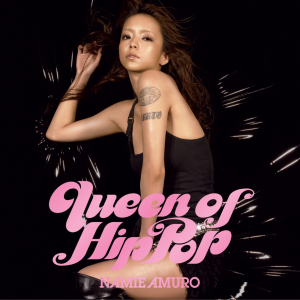
Queen of Hip-Pop is the seventh studio album by Japanese recording artist Namie Amuro. It was released on July 13, 2005, by Avex Trax. The album's lyrical content, composing and arrangement was handled by multiple music collaborators, such as Nao'ymt, Sugi-V, Michico, Tricky Stewart, T.Kura, among many others. It is her second full-length urban contemporary record, and is made up of songs of various musical genres. Amuro uses the term "hip-pop" to describe the music on the album because it fuses pop music with other genres including R&B and hip-hop music. Three different formats were released to promote the album: a standalone CD, a limited edition Playbutton, and a digital download.

Love Enhanced Single Collection is the second greatest hits album by Japanese singer Namie Amuro. It was released on March 13, 2002, through Avex Trax. This was Amuro's first greatest hits album in about four years, since 181920. It was also her first greatest hits album since her return to the music scene. Although the album is labeled as a "singles collection," nearly all of the songs on the album have been re-recorded, re-mixed, or re-arranged, all of which remain exclusive to this album's release. In addition, only "lovin' it" was recorded as a single take. The album also contains the last of the work she created with her longtime creative partner Tetsuya Komuro.

"Want Me, Want Me" is the 29th single by Japanese recording artist Namie Amuro. It was released by Avex Trax on April 6, 2005, and was the last retailed single to precede her seventh studio album, Queen of Hip-Pop (2005). "Want Me, Want Me" was initially supposed to be released as an album track of Queen of Hip-Pop or a coupling song, but Amuro thought it was so good she made it a single despite the opposition of her staff. The song's lyrics were written by Michico, while its music was composed by Sugi-V. Musically, "Want Me, Want Me" is an upbeat reggae-style tune with an addictive loop that incorporates Japanese elements like the koto that plays during the intro. Atypical for Amuro, the song contains sexually aggressive lyrics and namechecks the condom brand Trojan in the chorus.

"White Light" is a song by Japanese singer Namie Amuro. It was released by Avex Trax in Japan on November 16, 2005, as a double A-single with "Violet Sauce". "White Light" was supposed to promote Amuro's eighth studio album Play (2007), but it was scrapped from the final track list. Instead, an alternative version of "Violet Sauce" appeared. A demo version of the song was sent to Amuro, who decided it needed a warmer tone and reworked it as a Christmas song. It was modified by Nao'ymt, the song's sole composer, producer, and writer. Musically, it's a midtempo Christmas song with lyrics about love and holiday festivities.
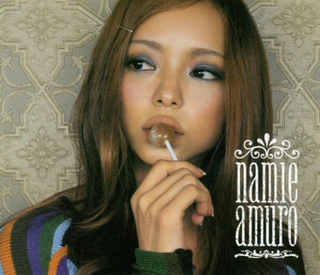
"Girl Talk" is a song by Japanese singer Namie Amuro. Avex Trax released it on digital and physical formats on October 14, 2004, and it is the third single from Amuro's seventh studio album, Queen of Hip-Pop (2005). It was also released as a double A-side with "The Speed Star", though the latter did not appear on the parent album. "Girl Talk" was written and produced by T.Kura and Michico, and is a dance song with R&B and pop influences that, like its parent album, transitions from Amuro's original dance sound to a more mature yet transatlantic sound.
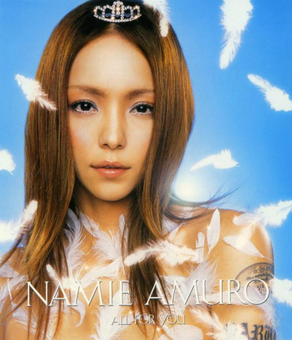
"All for You" is the 27th single by Japanese recording artist Namie Amuro. It was released on July 22, 2004, by Avex Trax, and serves as Amuro's second single from her seventh studio album Queen of Hip-Pop (2005). The lyrics were written by Natsumi Watanabe, who had translated "Stop the music" into Japanese for Amuro's 1995 single. The music was composed by Ryoki Matsumoto, known for composing other hit songs such as RUI's "Tsuki no Shizuku" and Mika Nakashima's "Yuki no Hana." Musically, "All For You" is a synthesizer-heavy power ballad.
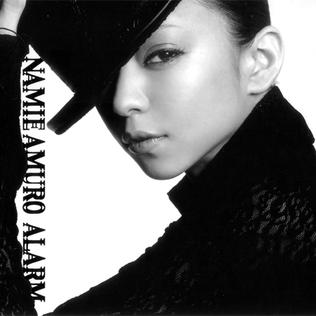
"Alarm" is the 26th single by Japanese recording artist Namie Amuro. It was released by Avex Trax on March 17, 2004, serving as the lead single to Amuro's seventh studio album Queen of Hip-Pop (2005). The song was written by Jusme and composed by Monk. The B-side "Strobe" was first planned as the main track of this single and when Amuro got the demo for "Alarm" the song was titled "Clock."

"Can't Sleep, Can't Eat, I'm Sick" is the 31st single by Japanese singer Namie Amuro. It was released by Avex Trax in Japan alongside "Ningyo" on May 17, 2006, as a double A-single. "Can't Sleep, Can't Eat, I'm Sick" served as the second single from Amuro's eighth studio album Play (2007), but "Ningyo" was excluded from the track list. "Can't Sleep, Can't Eat, I'm Sick" was produced by her two most frequent collaborators at the time: T.Kura and Michico for Giant Swing Productions. Musically, it is an upbeat urban contemporary and dance pop song that features a hefty amount of saxophones. Lyrically, it speaks of a lovesick person who can't get anything done when he or she thinks about their lover.

"Shine More" is the 23rd single by Japanese recording artist Namie Amuro. It was released on March 5, 2003, by Avex Trax and serves as the second single from her sixth studio album Style (2003). It was originally written by Scott Nickoley, Sandra Pires and Paul Taylor, while the lyrics were translated into Japanese by H.U.B. Amuro called "Shine More" the first part of a dance number trilogy including "Put 'Em Up" and "So Crazy."

"Can You Celebrate?" is the ninth single by Japanese recording artist Namie Amuro. Serving as the second single from her third studio album Concentration 20, it was released on February 19, 1997, by Avex Trax. Its lyrics and composition was handled solely by Tetsuya Komuro. Musically, "Can You Celebrate?" is a power ballad that incorporates gospel and classical music. Lyrically, the song express a longing for a deep and lasting love, asking if the listener can celebrate and kiss the singer.

"Sweet 19 Blues" is the seventh single by Japanese recording artist Namie Amuro. It was composed, written and arranged by Tetsuya Komuro for her debut album of the same name. A month after its release, her label Avex Trax released the song as a recut single due to overwhelming demand. The song's subject and the album in general was about the melancholic passing of another sweet year of youth, which is a particularly Japanese obsession.
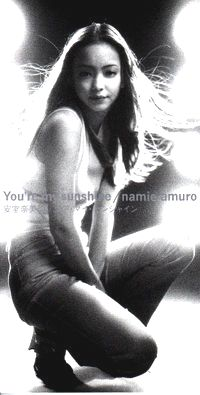
"You're My Sunshine" is the sixth single by Japanese singer Namie Amuro. It was released on June 5, 1996, by Avex Trax and was produced by Tetsuya Komuro. The song was the image song for the Bristol-Myers Squibb "Sea Breeze '96" commercial in which she appeared. The version used in the initial commercial had a different tempo and tune from the CD package version. The following year, 1997, she was used for the second consecutive year in a "Sea Breeze" commercial, this time using her hit song "How to Be a Girl".

"Baby Don't Cry" is the 32nd single by Japanese recording artist Namie Amuro. It was released as the second single from her eighth studio album, Play (2007). It was written, composed, arranged, and produced by Japanese musician Naoaki Yamato, under the alias Nao'ymt. The single also included the B-side track "Nobody," a reworked version of her 2005 song "White Light." "Baby Don't Cry" premiered on January 24, 2007, as the third single from the album in Japan. It was also released worldwide on February 21, 2007, through Avex Inc. Musically, "Baby Don't Cry" is an mid-tempo sunshine pop song influenced by R&B music.
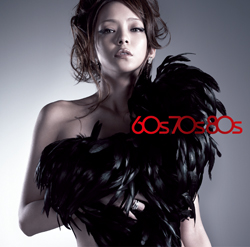
60s 70s 80s is a triple A-side single by Japanese singer Namie Amuro from her third greatest hits album, Best Fiction (2008). It was released on March 12, 2008, through Avex Trax and consists of the songs "New Look", "Rock Steady", and "What a Feeling", each sampling from a specific decade in music, hence the title.

Best Fiction is the third greatest hits album by Japanese singer Namie Amuro. It was released on July 30, 2008, by Avex Trax and features seventeen singles released between 2002-2008, which included five new songs, three of which were released as a triple A-side single called "60s 70s 80s." Furthermore, the album tracks "Do Me More" and "Sexy Girl" were released as digital singles.

"Wild" is a song by Japanese singer Namie Amuro. It was released by Avex Trax on March 16, 2009, and serves as the lead single for her ninth studio album, Past<Future (2009). Furthermore, all physical and digital formats included the A-side titled "Dr.," which appears on the parent album. Amuro intended to depart from her previous releases with "Wild" and "Dr.", her first forays into new material. Michico, T. Kura, and Nao'ymt created and produced "Wild," which was recorded at Tokyo's Azabu-O-Studio with Ryosuke Kataoka's assistance.

Past<Future is the ninth studio album by Japanese pop singer Namie Amuro. It was released on December 16, 2009, through Avex Trax. This was her first original album to be released in two and a half years. The record came after the release of her blockbuster greatest hits album Best Fiction (2008), which sold over a million copies. Unlike her previous studio albums, Queen of Hip-Pop (2005) and Play (2007), Past<Future features a more electropop and synth-pop sound that was prevalent in the western music charts at the time.

"Fighter" is a song recorded by Japanese singer Namie Amuro, released as a double A-side single with "Dear Diary". It was released on October 26, 2016 via Dimension Point and Avex Trax in two CD formats, and a DVD package; a digital release was made available for consumption on November 16. The single serves as the insert song to the Japanese drama–horror film Death Note: Light Up the New World, and the theme song to its accompanying spin-off series Death Note: New Generation (2016). "Fighter" was written, composed and produced by Japanese vocalist Emyli, with additional production credits to Reason.

"Dr." is a song by Japanese recording artist Namie Amuro, taken as the only A-side single from her ninth studio album Past<Future (2009). The track was written, composed, arranged and produced entirely by long-time collaborator Nao'ymt, and recorded at Azabu-O Studios in Minato, Tokyo. Musically, "Dr." is a dance number that is influenced by modern club music, and also samples an orchestral section from the musical piece "Boléro", composed by French conductor Maurice Ravel. Lyrically, it is a love song that uses the titular term to metaphorically describe Amuro's lover.



















